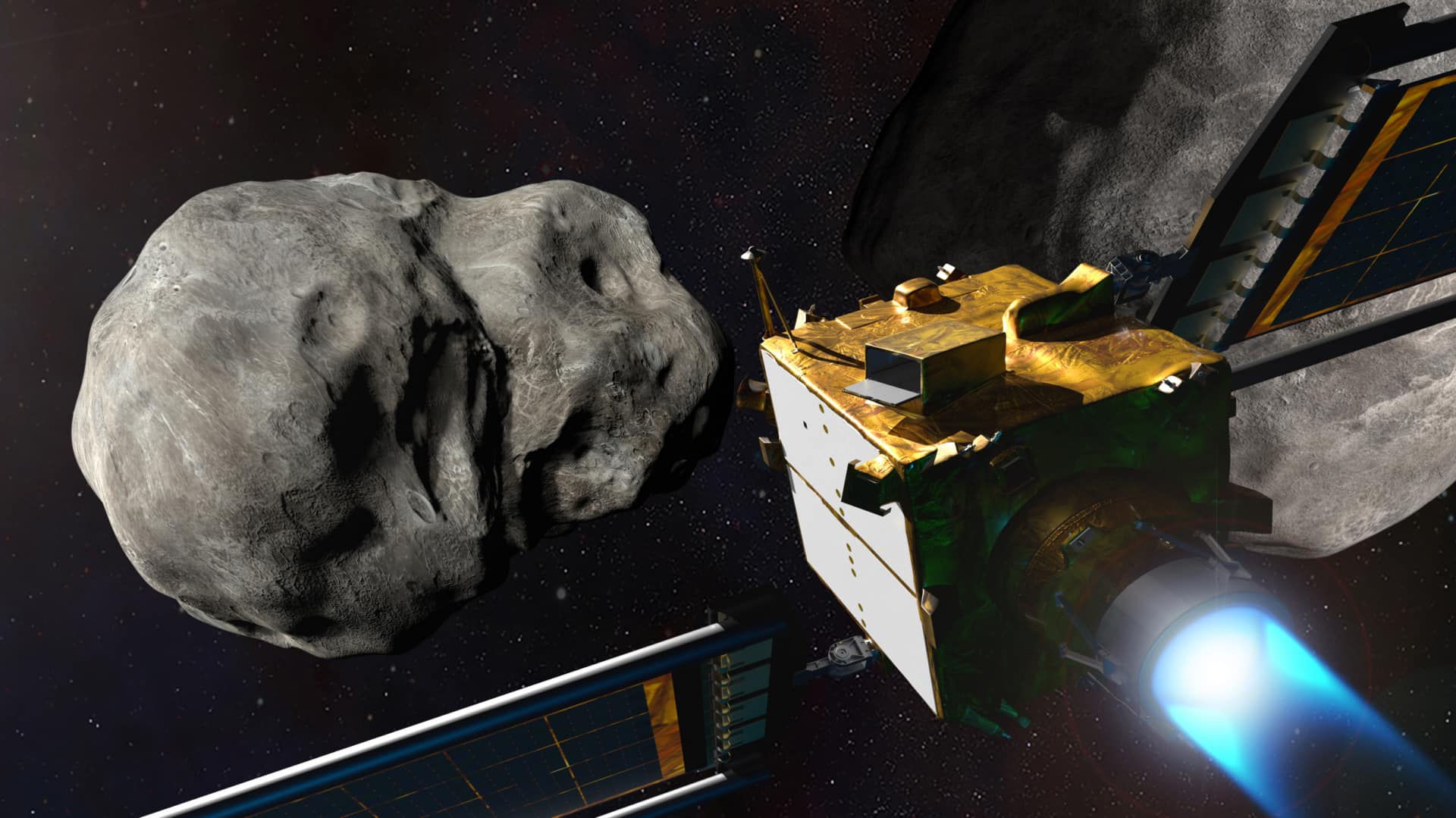
NASA's DART mission inadvertently redirects space debris toward Mars
What's the story
In an unforeseen turn of events, NASA's asteroid deflection mission from September 2022, has inadvertently set a trajectory for space debris toward Mars. The mission involved the Double Asteroid Redirection Test (DART) spacecraft colliding with the asteroid Dimorphos, scattering a significant amount of debris into space. Recent studies indicate that some fragments from this collision may be on a collision course with the Red Planet.
Mission details
DART mission was an experiment to divert threatening asteroids
The DART mission was a pioneering experiment aimed at testing our ability to divert potentially Earth-threatening asteroids. The strategy involved crashing a spacecraft into Dimorphos, part of a binary asteroid pair, and observing the changes in its orbit. This successful demonstration proved that it is possible to alter an asteroid's trajectory given sufficient preparation and execution time.
Collision aftermath
Impact on Dimorphos
Dimorphos, the target of the DART mission, is not a solid mass but rather a loosely bound 'rubble pile' asteroid. The collision with the DART spacecraft resulted in a large amount of rock and dust being dispersed into space. This unexpected outcome has led to an extensive scattering of debris, some of which are now heading toward Mars.
Debris analysis
Scientists study trajectory of scattered asteroid fragments
Astronomers Marco Fenucci from the European Space Agency and Albino Carbognani from Italy's National Institute for Astrophysics, have been examining the trajectory of these scattered fragments. Their research, published in the Monthly Notices of The Royal Astronomical Society, used numerical simulations to project the path of the impact ejecta 20,000 years into the future. The scientists focused on 37 boulders identified by the Hubble Space Telescope, ranging in size from four to seven meters across.
Mars impact
Potential collision of debris with Mars
The research suggests that while Earth is safe from these boulders, four of them could potentially collide with Mars — two in roughly 6,000 years and two more in about 15,000 years. Due to the lack of a protective atmospheric layer like Earth's, these rocks are likely to hit Mars' surface intact. The impact could create small craters of up to 300 meters across on the already heavily cratered Martian surface.
Information
Impending asteroid intersections pose risks
Currently, it might not appear as a big deal as there are no inhabitants on Mars to be concerned about. However, by the time the rocks are projected to intersect with Martian orbit, there could indeed be inhabitants if crewed missions proceed as planned.